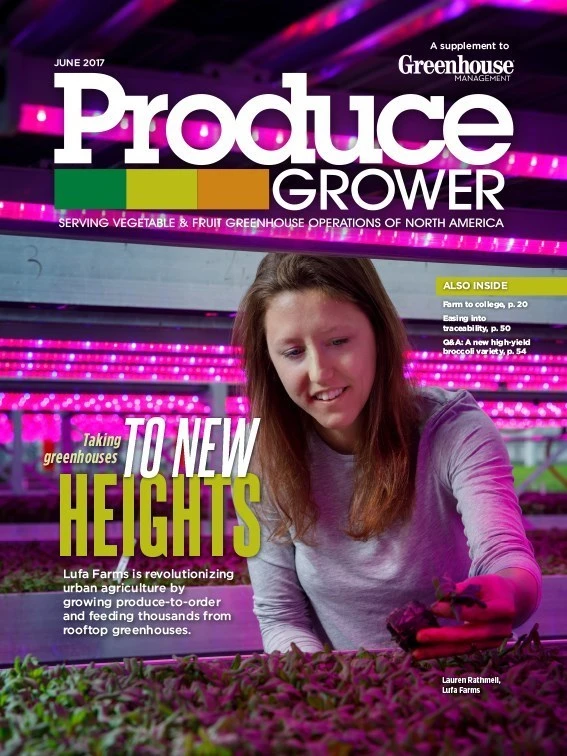
Trouble recruiting both skilled and entry level labor isn’t a new phenomenon in our industry. But times are getting even tighter when it comes to the availability of greenhouse growers that either have a degree or the equivalent experience. I typically receive several emails per week from businesses across the green industry spectrum asking for my help to recruit new hires. One position commonly requested, one that is a particularly tough challenge, is that of a greenhouse produce grower — especially at the head grower level.
It’s also no secret that fewer students are enrolling in university level greenhouse grower programs, and that horticulture degree tracks have disappeared from many universities across the globe. With fewer candidates available who have formal horticultural training, especially in hydroponics — and some of those who ditch the ornamental and produce side of the industry for cannabis production — it can be a tough and slow process to fill such key positions. You may find yourself overpaying underqualified employees just to keep the wheels turning.
Given the current and growing labor squeeze, it seems a logical solution would be to do what we already do best in this industry: grow our own. Like it or not, greenhouse growing operations may need to take on the role that technical schools and universities are abandoning when it comes to horticulture training. In-house education, hands-on job training, mentorship programs, and promoting from within could be, may have to be, the answer to your labor problems — and the future of growing new growers.

Let’s face it: If undeclared college students or recent graduates aren’t interested in getting their hands dirty, you might be better off to turn to the people in your company whose hands are already dirty. They’ve got skin in the game, right? If you put a robust and formally structured internal training program together and market it, you could also attract new recruits with a passion for plants, but who’d rather skip college and learn to grow on the job.
Luckily, interest in food production and sustainability is intense right now. While it might be tough to entice a newbie to take on a career in ornamental plant production, a future in food is a much easier sell.
An important benefit of growing your growers from within is the opportunity to indoctrinate them into your company culture at the same time they’re learning good plant culture. With both employee and employer loyalty seemingly hitting bottom barrel these days, internal training and promotion programs could be a great way to attract and keep valuable employees long-term in a competitive grower market. Keeping great employees, and paying them more as they progress, is always less costly than repeatedly hiring anew.
I know, you don’t have time to put a two-year, in-house education and training program together. I hear you. That said, there are several robust online courses and location-based training events that could help you get select employees on the right learning path right away. The University of Florida IFAS Extension has put together a sturdy online four-week training program (offered both in English and Spanish) that teaches participants the basics of greenhouse operations, nutrient and weed management, and even costing and profitability. Those enrolled can access the online coursework any time of the day, which makes it incredibly flexible. At about $200 per class, it’s a great value for you and your employee in training. This year’s training course starts on June 19, 2017. For more information on the course, visit bit.ly/2pgVUZN
Michigan State University Extension’s College of Knowledge and Kansas State University Extension both offer online courses in biological controls for greenhouse growing, as well as horticultural lighting. Participants have access to the online coursework from June 1-Aug. 31, 2017. For more information on MSU’s course, visit bit.ly/2pgGHIg
If your focus is tomato production, consider sending staff to Mississippi State University’s Greenhouse Tomato Short Course. Typically held in spring, this two-day event comes in at less than $250 to register and is jam packed with relevant training topics and access to supply vendors. They also offer a handy downloadable production guide for free at bit.ly/2pgJ0Ls
While your operation could clearly benefit from its own customized learning format, blending in these affordable and well-structured outside resources is a good way to get the in-house education ball rolling.
Investments in improvements to physical infrastructure and new technology are great, and something all growing businesses must do. But you’re not going to be able put your new facilities and technology to work for you don’t have qualified people on staff to manage them and your crops. As you look ahead to future spending and budget building, adding in-house education and job training programs could be your most important investment yet.

Explore the June 2017 Issue
Check out more from this issue and find your next story to read.
Latest from Produce Grower
- After a thorny 2024, the CEA industry looks ahead to 2025
- CEA HERB Part 1: Best practices for producing culinary herbs in controlled environments
- Jim Jones, FDA deputy commissioner for human foods, resigns over mass staff cuts
- Orbia's precision agriculture business Netafim releases Hybrid Dripline system
- Ledgnd opens second location, adds new functionalities to MyLedgnd software portal
- This fast and agile robotic insect could someday aid in mechanical pollination
- Hydrofarm joins GLASE as premium industry member
- Food safety leaders unite for LinkedIn live event on effective communication in crisis





